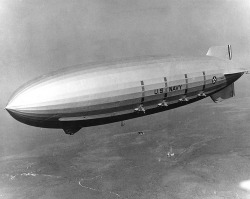Technology in Language Arts: Transportation eBook

Introduction:
This project will serve as a culminating activity to produce/publish an eBook containing a variety of written assignments and supporting materials about one mode of transportation. Each student will write about one specific transportation tool or technology. The students will create eBooks to share their writing, along with multimedia support including found media (videos and illustrations) as well as student-created media (recorded audio, charts/graphs, maps, and timelines.)
Click on the link below to see an example eBook about airships.
This project will serve as a culminating activity to produce/publish an eBook containing a variety of written assignments and supporting materials about one mode of transportation. Each student will write about one specific transportation tool or technology. The students will create eBooks to share their writing, along with multimedia support including found media (videos and illustrations) as well as student-created media (recorded audio, charts/graphs, maps, and timelines.)
Click on the link below to see an example eBook about airships.
I. Relative Advantage
Using web 2.0 technologies and desktop publishing tools will serve to improve student comprehension of the subject as well as building strong writing techniques including providing supporting reasons and details, taking time to edit and revise work, and showing connections between related topics and ideas. By including timelines, charts, graphs, and maps with their written materials, students will be sure that the information they are writing is logical and factual. In addition, they will be combining math, science, and social studies skills and concepts to derive conclusions and solve problems. Students will enforce well-structured and organized writing through use of mind maps and by verbally recording audio narration of their own work as well as writing by their peers.
II. Objectives and Assessments
This project will require a significant amount of time and will build upon knowledge and techniques learned in other lessons of the unit. Estimated time: 3 weeks.
Using web 2.0 technologies and desktop publishing tools will serve to improve student comprehension of the subject as well as building strong writing techniques including providing supporting reasons and details, taking time to edit and revise work, and showing connections between related topics and ideas. By including timelines, charts, graphs, and maps with their written materials, students will be sure that the information they are writing is logical and factual. In addition, they will be combining math, science, and social studies skills and concepts to derive conclusions and solve problems. Students will enforce well-structured and organized writing through use of mind maps and by verbally recording audio narration of their own work as well as writing by their peers.
II. Objectives and Assessments
- Outcome: Write persuasively. Objective: Students will create a persuasive writing article about the probable future for their selected transportation, with convincing reasons and evidence why they believe that future will occur. Assessment: Persuasive writing rubric.
- Outcome: Summarize and write to inform. Objective: Students will write a succinct 1-2 page sequential/chronological history of milestones and events related to the transportation. Assessment:Expository writing rubric.
- Outcome: Revision and editing skills and techniques. Objective: Students will revise and edit a draft in order to improve organization, structure, flow, and/or spelling and grammar. Assessments: (1) Organization, spelling, and grammar included on writing rubrics. (2) Audio narration and mind map included in project checklist.
- Outcome: Draw conclusions from data or statistics. Objective: Students will analyze historical and/or geographical numbers and statistics to compare, contrast, and make conclusions and predictions. Assessment: Charts/graphs and maps included in project checklist. Visual aids should support data in write-up about "trends"
This project will require a significant amount of time and will build upon knowledge and techniques learned in other lessons of the unit. Estimated time: 3 weeks.
- Day 1: Introduce purpose, topics, rubric and example.
- Days 2-3: Research history of the transportation, recording and organizing facts.
- Days 4-5: Write summary of history and create timeline.
- Days 6-7: Use audio recording to proofread your own history. Then swap with a partner to read his/her history. Both partners should listen to the audio recordings. Which sentences flowed well? Which seem choppy, confusing, or too hard to read or understand? Using these audio recordings, revise, edit, and rewrite your history.
- Day 8: Locate and analyze statistics, creating charts, graphs, and maps using spreadsheet and charting software.
- Days 9-10: Investigate technologies -- both old and new -- that affected or could affect this type of transportation. Use a mind map / concept web to record and organize these facts.
- Days 11-12: Based on the previous steps, categorize and describe (compare/contrast) trends in use of the transportation method for different times, places, or purposes. Repeat the audio narration proofreading and revision as step 4.
- Day 13: Repeat this process by using your existing facts and data in a mind map to write a convincing prediction of the future for your transportation.
- Days 14-15: Use layout design knowledge and tools to create an eBook containing all writing and supporting materials.
- computers with Internet connection, headphones, and microphones for audio recording
- Wikipedia, wikimedia, and encyclopedia sites
- eBook Publishing: myebook.com
- Charts and Graphs: chartle.net
- Editable Maps: scribblemaps.com
- Concept Web / Mind Mapping: mywebspiration.com
- Text-to-Visual: text2mindmap.com
- Create Image using Words: Textorizer

